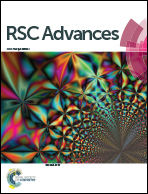Preparation of carbon-based hybrid particles and their application in microcellular foaming and flame-retardant materials
Abstract
Polymeric microcellular foams with high strength and light weight are very important for industrial applications. However, regulating their cell structure and their weak flame retardancy are problematic. We designed single-arm POSS-based ionic liquids ([bel-POSS][PF6]), and constructed hybrid composites based on physical interaction between ionic liquids and carbon-based materials in PS microcellular foaming. Ionization of bel-POSS could result in a quaternary ammonium reaction and ion-exchange reaction, and the carbon materials exhibit good dispersion through blending. The prepared hybrid composites showed high CO2 adsorption. Conical calorimeter tests showed that PS composite materials could reduce the heat release rate, total heat release, toxic gases (CO2 and CO) release, and amount of smoke generated. These carbon materials could affect PS micropore structure, including the cell diameter and density. Upon addition of 5 wt% of carbon materials, the hole diameter decreased by >50%, and the hole density increased nearly ten folds.



 Please wait while we load your content...
Please wait while we load your content...